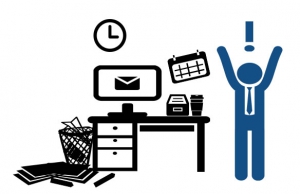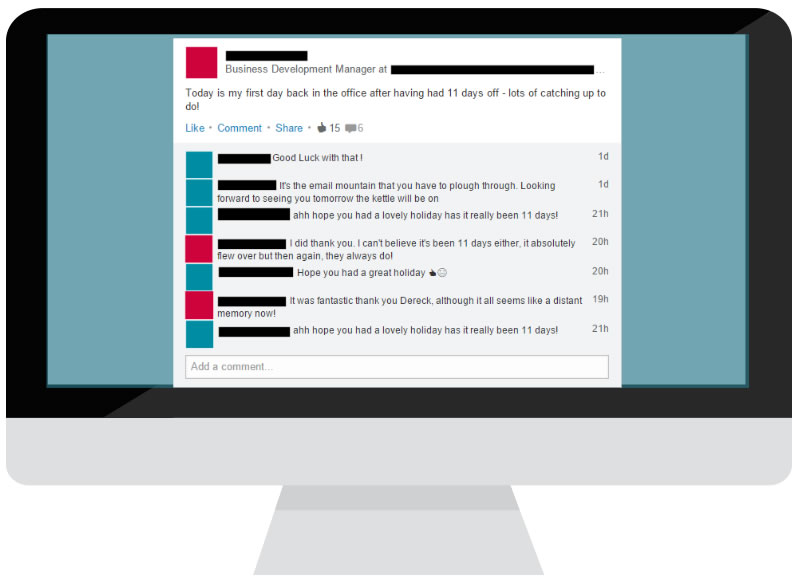- Sophie Main
- March 21st, 2016
Easter weekend is almost here which means that chocolate eggs and edible bunnies are already hopping off the shelves and holiday plans are under way. It may seem that the biggest worry of the long weekend is whether the sun will make an appearance so we can relax in a beer garden, but there’s a greater apprehension plaguing this holiday: The accumulation of work that will be waiting when we return to our desks.
Over two-thirds of employees find returning to work after a break stressful and 31% of that figure identified overflowing email inboxes and the backlog of to-dos as the primary cause of their anxiety. So, it seems that it’s not just the chocolate and beer that makes Easter bad for our health. Our solution? Ban holidays! And chocolate. And beer.
There is a less controversial solution: Make simple changes in your company to minimise, if not eradicate, these anxieties. This is important to individuals on a health and wellbeing level, but also on a larger scale from a business perspective – stress can seriously impact employee performance and this will ultimately affect the efficiency of the company.
Here are our top three tips that will change your workplace into one that is optimised, efficient and ready to defeat the back to work blues that are casting a shadow over your well-deserved holidays:
Set standards
There are far too many employees solely responsible for systems that are vital to the running of a company, and this is one of the major reasons for the unhealthy stigma attached to taking leave. These individuals, commonly referred to as a single-point-of-failure, can not only halt important processes if absent, but often encounter an unhealthy feeling of guilt when taking holiday. Surprisingly, this common problem has a simple solution: Standardisation.
By standardising all systems and procedures, ensuring information, skills and tools for all systems are widely known and readily available, your office will transform from one that crumbles into disarray at the sight of a leave application, to one that laughs in the face of long weekends. As all procedures can carry on with ease, regardless of absences, there will be less pressure on holidaying employees so they can return from sunning themselves in St Tropez refreshed and efficient.
Don’t risk it
There are always risks when employees take leave, and amongst the holiday excitement and rush to leave the office in time for a flight, the risks can be missed or swept aside. However, companies can avoid this by performing a simple Failure Modes and Effects Analysis (FMEA). This process looks at all the ways a system can fail and by undertaking an FMEA, companies can identify risks that could occur in a person’s absence. This allows you to prepare and put systems in place so that all imaginable risks are minimised, reducing the anxiety and stress holidays can cause.
For example, the FMEA may highlight that, while your office will be closed for the long weekend, your suppliers in China don’t celebrate the holiday and will still expect a point of contact. If this risk is not identified and the issues are not planned for, relationships could be damaged, production may halt and there will be o
On a smaller scale, an FMEA may also identify the need for standard pre-holiday procedures, such as ensuring that automated ‘out of the office’ emails are activated before any leave is taken and that there is a shared calendar detailing all employee holidays. Not only will this allow the company to best prepare and continue running smoothly, but the anxiety of the dreaded overloaded email inbox will become a distant memory.
Prepare for your return

A messy desk is not only unmotivating, but can result in you starting your first day back frustrated and wasting time trying to locate the files you need. Implementing simple organisation methods such as 5S, in which workplaces are sorted, set in order, shined, standardised and sustained, means that you’ll be efficient as soon as you return to your desk. The 5S method in particular is also helpful to the standardisation discussed earlier, as your tools, documents and information can be easily accessed by colleagues. This reduces the very serious risk of receiving a phone call from work asking you to describe the location of a file while you’re floating on a lilo.
The growing stigma and anxiety attached to taking holidays makes it too easy to forget the necessity of leave to relax, rejuvenate, and ultimately return to the office more productive. By following these top three tips, your business will become more efficient and organised, creating a positive office culture towards holidays and beating the back to work blues.
What’s more, the real benefits of these improvements go beyond the first day back in the office and you can expect to see continual long-term positive changes for you and your company. To discuss the exciting possibilities of business improvements, please get in touch on 0800 066 3749.




